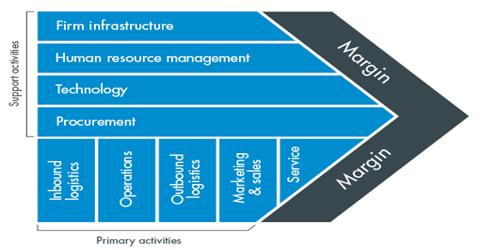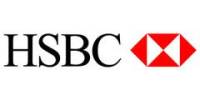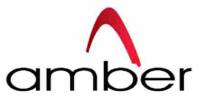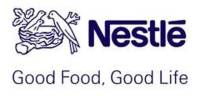The major objective of this report is to find out where the value add and destroy in B&H by value chain analysis of Benson & Hedges, which is a best brand in British American Tobacco (BAT) portfolio. BAT follow the value chain model which identifies 9 strategically relevant activities that create value in a business. BAT at first cover the sequence of bringing materials into the business, converting them into final products, shipping out final product marketing.
Working Report
British American Tobacco Bangladesh (BATB) is a subsidiary of British AmericanTobacco Group. It has been incorporated in 1972 as Bangladesh Tobacco Company (BTC).Since 1972 BATB has been operating in Bangladesh as one of the leading multinational organization. Since 1972 BATB is operating as the market leader in the tobacco industry by providing some of the most powerful global and local brands. At present BATB is the highest tax paying company, contributing around 7% of the total revenue of theGovernment of Bangladesh. BATB is renowned as one of the most prominent socially responsible and ethical company in the minds of the citizen.
I am doing my internship in the supply chain department of BATB, which offers a wide range of value chine and also identify how value add & destroy B&H in BATB.
Introduction
Research Context
Report titled “The Value Chain Analysis of Benson & Hedges of British American Tobacco Bangladesh (BATB)”. The research is conducted as a part of BBA internship Program 2012, of Department of Marketing, Independent University of Bangladesh. The study has been carried out in BATB under the direct supervision of respective authorities within a 12 weeks internship attachment period.
The aim of this report is to show the value chain analysis of Benson & Hedges, which is a premium segment brand in British American Tobacco (BAT) portfolio. It is the 8th biggest brand in BAT portfolio with worldwide sales of over 15.4 billion sticks per month.
Every firm is a synthesis of activities performed to design, produce, market, deliver and support its product. The value chain model identifies 9 strategically relevant activities that create value in a business. Our discussion will be based on these 9 activities.
Primary Activities cover the sequence of bringing materials into the business, converting them into final products, shipping out final product marketing
Purpose of the study
The purpose of the study is to find out where the value add and destroy in B&H. I see lots of sector value destroy like inbound logistics B&H raw materials comes from comes out side from the country as a result some time when demand increase B&H they don’t provide raw material properly here lots of value destroy. My purpose to find this problem and try to find out solution. On the other side in operation sector they reuse wastages tobacco its add lots of value they have a modern machine. In B&H they use FROTOS FOKI machine it is very high
Quality machine. It adds lots of values some time it destroy value my study to find out where this value destroys. In distribution sector how efficient they are how much value they add to find out. Here if any value destroys find out why value destroys here. In marketing sector how they create efficient marketing in B&H. BATB also give proper training their employee how they give training how much value add if here any value destroy to find out. And other supportive activities in value chain how create value find out.
I also hope to carry out a broad based and in depth study that will throw up fresh and interesting perspectives to the issue and try to arrive at and provide logical and practical solutions and recommendations that could definitely help value chain in British American Tobacco.
Statement of the Problem
Business around us is becoming competitive day by day. Innovation is also playing a vital role in shaping up the business around us. Even if we consider our own country Bangladesh has seen expansion of its middle class, and its consumer industry has also grown. In December 2005, four years after its report on the emerging “BRIC” economies (Brazil, Russia, India, and China), Goldman Sachs named Bangladesh one of the “Next Eleven”, along with Egypt, Indonesia, Vietnam and seven other countries.
Like other industries tobacco industry is also experiencing growth over the last years. It has been seen that in Developing countries the number of smokers are higher than the developed countries. The tobacco industry is mainly driven by young population growth and innovative value chain strategy.
This research will find out the important factors affecting value chain strategy B&H and will also investigate BATB performance against its competitors. This research will also expose the expected service level of the most important factors o f BATB customers
Research Question.
- To have an understanding on value chain Strategy of BAT Bangladesh.
- to identify relative marketing initiatives taken by BATB and implementation of those activities
- Assessment tools for the value investment of BATB.
- To gain an understanding on the tobacco industry and on the competitive market scenario.
- To understand the different functions of BATB
- To identify B& H inbound logistics like raw materials, quality control.
- To have an Idea how operation work B&H created for BATB.
- To get an idea how outbound logistics actually work B&H in BATB
- To understand Brand awareness measurement procedure
- To develop and understanding and implementing the different marketing strategies and activities of BATB performed all over the country.
Background of the Company:
Nature of the Industry:
The tobacco industry of Bangladesh is an age old industry. There a distinct monopoly in this industry where British American Tobacco Bangladesh (BATB) leads the market with more than 50% market share. The other major players are-
The main cigarette manufacturers today are:
- British American Tobacco Bangladesh
- Dhaka Tobacco Industries
- Abul Khair Tobacco
- Nasir Tobacco
- Azizudin Industries and
- New Age Tobacco.
The main biri manufacturers are:
- Akij Biri
- Abul Biri
- Nasir Biri
- Karikar Biri
- Aziz Biri and
- Hundreds of local biri manufacturers.
The industry is very price sensitive in nature. It is also a stick selling market, which means that most of the tobacco consumers normally buy tobacco in sticks, not in packs. These two features-price sensitive and stick selling-influences the business philosophies of the companies.
At the moment, there are two main tobacco industry associations i.e. Bangladesh Cigarette Manufacturers Association (BCMA) and Bangladesh Biri Manufacturers Association (BBMA) representing the industry.
Industry Segmentation:
The tobacco industry can be divided into two markets-Biri market and Cigarette market.
Biri Market:
Biri market is comprised of 72% of the tobacco market. It is basically the non-filter cigarette market with a very two pricing. So biri is by far the dominating segment in the tobacco industry. Recent trend has shown that biri market is experiencing decline which is a favorable sign for the cigarette market. BATB does not operate in this market. The major brand in this market is ‘Akiz Biri’, product of Dhaka Tobacco Industries. This is by far the most popular Biri in the country.
Cigarette Market:
Cigarette market is where BATB has all its focus. The market covers the rest 28% of the industry. But the value of this market is lot higher than the biri market. The market can be divided into four segments on the basis of price. They are:
- Premium
- Medium
- Low
- Very Low
BATB operates in the top three segments of the industry. It does not operate in the very low segment. Along with BATB, DTI and Alpha Tobacco is also a major player in the low segment.
Today, the market is estimated to be 64.2 billion sticks of biri and 51.8 billion sticks of machine manufactured cigarettes. Biri overtook cigarettes as the more popular smoked product in 1979. However, the market for biri has been on a declining volume trend since 2003. This reflects the switch by consumers due to social pressure, urbanization, literacy rate, economic growth and awareness by consumers.
The market has a high International Brand share (18.2%).
Competitive Scenarios in the Cigarette Market:
In May 2008, Philip Morris International launched both full flavored and light variants of Marlboro brand cigarettes in different markets of Dhaka. Dhaka Tobacco Industries is manufacturing and distributing the brand.
BAT Bangladesh and Dhaka Tobacco Industries together hold more than 80% of the cigarette market share.
Tobacco products are distributed either by manufacturers themselves, third party distributors or wholesalers. The sales and distribution effort requires a large number of field employees and agents because they have to serve about 880,000 individual retail outlets throughout Bangladesh with a growth of 10% per annum.
The number of retail outlets is estimated to be growing by about 8% a year. The proliferation of retail outlets is mainly due to the ease of entry and the low capital requirement. Many of these outlets operate on limited capital and are unable to purchase quantities beyond their immediate daily sales. The high number of retail outlets has created a “stick market” and consequently imposed more frequent sales visits compared to other similar businesses.
Primary activities
Inbound logistics Benson &Hedges
Inbound logistics is an integral element of business operations for a manufacturing firm, involving the processes of receiving, storing and distributing raw materials for use in production. It is the first stage in value chain, which business management expert Michael Porter outlined in his 1985 book “Competitive Advantage.
Every single raw material of Benson & Hedges is imported. The procurement department imports these as required and sends them directly to the factory warehouse with the help of inbound logistics. As these raw materials are ordered in bulk, economies of scale is achieved which in turn adds value to the product.
Operation Benson &Hedges
Operation: operation means converting materials into final products .When converting final product added lots of value.
The Primary Manufacturing Department:
The primary manufacturing department (PMD) is responsible for further conditioning the important tobacco to make it ready for production. The tobacco passes through a set of integrated and regulated machinery whose purpose is to blend the different ‘packing grades’ in specified proportions, convert the bales into ‘rag’ suitable for use in cigarettes, and bring tobacco to a uniform temperature and moisture.
The Secondary Manufacturing Department:
The secondary manufacturing department (SMD) uses the tobacco that is blended and conditioned by the PMD along with wrapping materials to manufacture cigarettes. The PMD delivers its final processed tobacco to Cut Tobacco Store (CTS). The CTS has a 50-ton storage capacity and the tobacco is stored there typically for one and a half days before it is used. The SMD brings in the processed tobacco from the CTS as needed for production along with wrapping material. Currently there are 16 cigarette-making machines at Dhaka factory, which are operated in three daily shifts. Shift engineers and officer’s monitor shift activities to ensure quality production. The flow of tobacco and cigarette paper to the cigarette making machines are regulated by six (programmable Logic Controlled) PLC controlled feeders. These feeders send in the required quantities at the right time to ensure smooth production.
Eachof cigarette is monitored by a separate feeder. In addition to the tobacco and cigarettewrapping material, filter rods are fed into the machines for cigarette production. The machines combine these three inputs to generate cigarettes as output. Defective cigarettes are either identified manual or by built in sensors and removed from the production flow.The tobacco from these wastes is removed and reused for cigarette production.
The manufactured cigarettes are deposited in trolleys and carted to the packing machines. There are currently 18 packing machines at Dhaka factory. These machines are equipped with the wrapping material used to pack the cigarettes. Almost all of the wrapping materials used are imported. Local companies, however, conduct the printing work that is required. The manufactured cigarettes are fed from trolleys into the packing machines, which generate the packed cigarette as output. The flow is monitored closely to identify and eliminate defective products. In addition to the cigarette manufacturing and packing machines, Dhaka factory has twoSecondary Production Units (SPU). These are used exclusively to produce the StateExpress 555 and John Player Gold Leaf brands. These modern production lines are different from the other machinery in that both cigarette manufacturing and cigarette packing can be conducted in one process flow. This reduces the time needed to manually put the cigarettes into trolleys and cart them to the packing machinery. The SPU makes approximately 8000 cigarettes per minute. Defective cigarettes are detected by sensors in the machines and are removed automatically. In addition manual checking is conducted for quality control purpose.
In Benson & Hedges a very special machine called “Protos Focki” is used to produce the cigarettes of BAT. This is an automatic machine capable of producing 10,000 sticks of cigarette per minute. It takes almost one and a half year to build a Protos Focki and it costs $4,000,000.
Raw materials are placed at designated points in the machine. The operator inputs the required quantity and the machine automatically uses the resources to produce the desired quantity of output. The outputs are finished goods and are ready for sale. Each packet of Benson & Hedges contains 20 sticks. These sticks are wrapped with a golden wrapper which helps keep the cigarettes still. Then it is put in the final gold packet. This packet has a hinge lid for easy use. There is also a film coating on the pack which helps reduce damp on cigarette .This is the most advanced cigarette manufacturing machine that is exclusively built for BAT and is not available anywhere else. This huge initial investment in turn reduces cost of production and adds value to the final product.
Advantage: Protos Foki maintain product quality very high. it makes 500 B&H packet per minute. its packet quality is very high .It has another big advantage that is if rapper close packer is not close its is very big advantage. In another machine like GLD rapper close all packer close so production of . It has another big advantage they said if any B&H quality come bad it automatically display in the monitor. So this machine added lots of value.
Packaging:
For many years, B&H cigarette packs were hard or soft, but otherwise changed very little. In recent times, consumers have become increasingly interested in packaging improvements, and these can be a strong source of competitive advantage.
BATB is meeting consumer interest with a stream of packaging innovations, such as compact packs, side-opening packs, packs that open like wallets, waterproof packs, re-sealable packs to keep the contents fresher and packs with rounded edges.
Innovations vary across its brands, brand variants and markets and its approach enables BATB to adapt its offers flexibly to local preferences. BATB’s guiding focus in innovations is on relevance to the consumer, speed to market and being continuously ready to improve.
Outbound Logistics Benson &Hedges
The movement of material associated with storing, transporting, and distributing goods to its customers.
British American Tobacco Bangladesh (BATB) extends all across Bangladesh. They have their head office and factory located in Dhaka. There are three leaf regional offices located in Banderban, Kushtia and Rangpur. They have six regional marketing offices all over Bangladesh.
The six metro markets are Dhaka, Khulna, Mymensingh, Bogra, Sylhet, and Chittagong. Distribution is done with the help of authorized dealers. BAT does not take their products directly to the market. There are 52 authorized distributors that distribute the products to 510,000 outlets approximately.
Distribution is divided into three categories. They are: Retail Store, Retail Cash and Carry, and Bazaar Cash and Carry. The distributors use their own vehicles, covered vans, cycle vans, etc to distribute the product. And in the passive outlets, the areas are very close to the river, where vehicles cannot go, they supply the product through boat.
Regional Go-down: There are five regional go-down throughout the country to fill every regional demand just at the time of need, and to overcome various uncertainties related to physical distribution of products, every regional go-down is directly controlled by separate Regional Manager to face the regional physical distribution challenge. So this five regional adds lots of value.
Carrying Contractor: They are the party engaged in the physical movement of cigarettes from head office go-down to regional office go-down. Normally they are the truck owners who take all the risk and responsibilities of physical movement of goods between two warehouses. Sometime this truck owner destroys value to damage goods.
Distribution Warehouse: All distributors have their own warehouse, where cigarette can be kept safely while not degrading its product quality. Distributors buy the cigarette from BATB and from that point ownership and all responsibilities of the products go under the distributors.
Internal Carrying Agent : They are like carrying agent but carry small volume of products. Normally they are local truck owners. They carry products from, regional go downs to distributor warehouses. They also take al the responsibilities and risk engaged in physical movement of products.
Opening Stock at Distributors’ Office :A part from the warehouse, every distributor also maintains another stock at their office. This stock is for maintaining any change in market demand instantly. Dealers sometimes sell cigarette through their counters to face special situation.
Delivery Van: All the delivery vans are owned by the dealers to assure the supply of cigarette on the door of wholesalers, cash & carries and retailers just according to their demand. There are two types of delivery vans. One is Scooter van and another is Rickshaw van.
Cash & Carry: They are businessmen who sell cigarette directly to consumers and at the same time they sell cigarette to the retailers.
Retailers: Retailers are at the end of the physical distribution system of cigarette selling products directly to the consumer.
The distribution chain shows how the product goes from the factory to the hands of the consumers. It all starts with the factory where the tobacco is turned into cigarette and packaged. The cigarette comes out of the factory as a finished good and is kept in the company’s warehouse. Then the tobacco product goes to 6 regional depots. From the depots, the authorized distributors take it to their distribution warehouse. Then from the distribution warehouse the distributors use their own vehicles to get it to the market.
BAT ensures that no value is destroyed throughout the distribution process.
Limitation: In distribution there is little limitation. Some time truck not proper time to reach their destination. Another big problem is that this truck material is very costly probably B&H 1 truck carry 3 core taka .So they do not send their truck at night. It is a big problem.
Approaches to Marketing:
BAT’s business is about offering adult consumers high quality brands that they will choose over competitors’ products. It is not about boosting the number of smokers, increasing the amount they smoke or targeting the underage.
BAT’s International Marketing Standards, revised in 2007, detail its commitment to marketing appropriately and only to adult consumers. The Standards apply to all its companies globally and govern its tobacco marketing across all areas including print, billboards, electronic media, promotional events and sponsorship.
BAT’s updated Standards were rolled out during a 12 month period and all its companies were expected to confirm their adherence to them by 30 June of the next fiscal year.
To track implementation, a self-assessment audit of adherence was conducted by all Group companies shortly after the deadline. The assessment reports an overall adherence rate of 97 per cent but it also identifies some areas where it is not yet meeting its updated Standards.
Instances of non-adherence are principally related to inconsistencies in interpretation of the Standards at a local level. The self-assessment highlights the need for clarification of this interpretation around certain promotional activities and for sanctions that may be applied to retailers who sell to the underage.
BAT has issued additional guidance to its companies to help address these issues.
Action plans are now in place to help it achieve 100 per cent adherence by the end of 2010. Progress against these plans will be monitored through the Regional Audit and CSR Committees and the Board CSR Committee.
What BAT does not do in Marketing:
Strict laws in many countries, and its voluntary International Marketing Standards, mean there are many things it doesn’t do in marketing.
Top of the list is that it doesn’t market to the under-age. It doesn’t do ‘product placement’ in films, plays or TV programs, or link BAT’s product brands to celebrities or to sporting, professional, social or sexual success. Its entire consumer packaging carries a clearly visible health warning, even where the law doesn’t require it.
What BAT does for its Success:
Given the restrictions – including the tight restrictions BAT set for itself – people often ask how it delivers such strong brand growth?
The answer is simple, though it takes hard work and skill to achieve.BAT has developed approaches that it’s believe are appropriate for modern marketing of its challenging product, and pursue excellence in everything it does.
The Structure of the Marketing Department of BATB:
Marketing is “The Department” of BATB. The marketing department has recently been rebuilt by merging Brand marketing and Trade marketing. Earlier these two were individual departments. But now with the “Power of One” theme the brand and trade department has formed a very efficient marketing department.
While the Brand Marketing wing focuses upon the branding aspects of a product, the Trade Marketing & Distribution (TM&D) Wing focuses upon the trade and distribution aspect. These two wings are joined by the Trade Development Team (TDT).
Brand Marketing:
The Brand Marketing department concentrates on satisfying consumers’ needs from within the brand portfolio. Once consumers’ needs are understood and evaluated, brands can be made available, accessible and desirable through strong, consistent communication. The brand marketing elements covers the adopting of products, logistics and brand marketing policies that best meet the needs of particular trade channels and strategic customers. The Brand Managers and Brand Executives are responsible for the allocated brand(s). They are responsible for all type of brand management activities.
Market intelligence includes the market research team. The team keeps constant eye on the market situation. Through continuous research, market research teams generate useful market information for the brand managers. Interface is required between brand marketing and research which is carried out by any project that is divided by three phases:
- Preparation prior to the study
- Collection and analysis of data
- Presentation and utilization of information
There are different sort of researches carried out in the field level for gaining important information.
Vision and Mission of Brand Marketing
The vision of the Brand Marketing wing is:
Within five years to be the undisputed leader of Bangladesh tobacco market
It also includes:
- Dominate value share
- Dominate volume share base
- Destination brand in key segments.
The mission of the wing is:
- Promise of future profit growth
- Grow quality share: ASU30
- Owning the medium and premium segment (90% share)
Trade Development Team:
This department works in between the brand and trade department in a view to facilitate and coordinate the activities from the two ends. TDT performs different functions like channel management, cycle planning, merchandising etc.
Channel Development:
There are three types of channel outlets where cigarette is sold. This is classified on the basis of quality, authority, environment etc.
- Convenience
- Grocery
- Horeca
Convenience Outlet:
All shops where consumers generally go without any purchasing intention fall in this category. The consumers like to buy product on impulse from this sort of outlets. These outlets generally maintain a limited product range and do not offer flexibility in prices.
- This type of outlet adds value in B&H those who don’t buy may be buy.
Grocery:
These are the outlets where consumers visit on a regular basis with a purchasing intention. They generally make a list of items before they will visit these sorts of outlets. These outlets typically offer variety in terms of product range and flexibility in prices.
- Here give lots of facilities so that this grocery adds lots of value.
HoReCa:
Shops like hotels, restaurants, and cafes are considered in this category. The prime characteristic of a HoReCa is that the shops must have a seating arrangement. It is assumed that consumers visit those shops with the intention to spend some time. These outlets range from small roadside cafes with seating arrangements to luxurious restaurants of fast food outlets.
- So this HoReca also add value in BATB
Cycle Planning: Cycle planning is a process by which a particular brand’s message is designed and communicated to the trade and consumers. Usually, a particular brand cycle continues for at least a month. It can also be for 2/3 months. Cycle communication is implemented through the TM&D level.
Six Critical Factors to Achieve TM&D Mission:
- Secondary Supply Chain/ Product Management:
Optimize cost and performance while ensuring achievement of brand objectives. The associated sub-activities are:
- Supply chain strategy/management
- Order management
- Order fulfillment
- Trading terms
- Inventory management
So we see here lots o values add here cost are optimize and also ensuring achievement
- POP (Point of Purchase) Management:
Create effective competitive entry barrier at point of sales while driving international brands. The associated sub-activities are:
- Display
- Promotions
- In-store communication/advertising
- Implementation
- HoReCa (Hotels, Restaurants and Cafes)
Here also values add create competitive entry barrier
- Account Management/ Channel Development:
Create an effective entry barrier while driving brand imagery, awareness and trial in HoReCa and superior grocery outlets. The associated sub-activities are:
- Account planning
- Account profitability
- New business development
Here create awareness, business development, and also new business development so lots of values add this stage
- Strategy and Planning: Ensure effective implementation of EMF (effective market focus) process to support achievement of company’s objectives. The associated sub-activities are:
- TM&D planning
- Cycle planning
- Coverage planning
Here focus effective market and support company achievement so lots of value here adds.
- Resource Management:
Ensure that TM&D Organogam is responsive to the changing trade and company needs. The associated sub-activities are:
- Financial planning and management
- Manpower planning
- Organization development
- Management information for marketing overview
Here changing trade and create financial planning, manpower planning, organization develop so BATB adds lots of value
- Information Management: Drive Quantum business benefits to the fullest. The associated sub-activities are:
- Market intelligence
- Internal monitoring
- Information technology
- Customer satisfaction
Here create business benefits, market intelligence, customer satisfied all adds value in BATB
Servicing
Training & Development:
To train the working people is one of the most important jobs of any Training center. They generally train the people working for the distributors, for example distribution representative and also the contract merchandisers within his territory. They also train the retailers about how to approach customers, if necessary.
Support Activities (B&H)
Firm’s Infrastructure: The infrastructure of the company has a broader field where the company plays its important role. BATB has 6 Regional Trade Marketing Offices (RTMOs), 12 Regional Sales Depots, 1 Factory, 1 Green Leaf Threshing Plant, 7 Leaf Depots and a Head office consisting of Corporate Head office and Production Head office. The Company’s Head office and Cigarette factory are located in Dhaka. A Green Leaf Threshing (GLT) Plant has been set up in Kushtia and it has started operation from April 1995.The company’s products are manufactured in the factory at Mohakhali, Dhaka. The Plant Manager who reports to the Production Director at the Head Office heads Dhaka factory. The company’ procures tobacco leaf maintaining the international standard and it imports processed tobacco leaf for its international brands. It procures green tobacco from the registered farmers of the leaf area mainly for it’s local brands. The company’s authorized leaf areas are located in Kushtia, Chittagong and Manikgonj. But bulk of tobacco leafs comes from Kushtia region. The Chittagong area is under development process and it now covers Rangunia and Lama. The company operates 7 leaf depots in he leaf area. 4 of them are located in Kushtia region, 2 of them are located in CDA and other 1 is in Manikgonj, The company provides all sorts of supports to the registered growers through its depot personnel. This includes technical know how, agricultural inputs and financial assistance. The company performs its sales and distribution operation all over the country through its five regional sales offices. They are located in Dhaka, Khulna, Chittagong, shylet and Rajshahi. Each of the regions is again divided into operational areas, each of which in turn is divided into territories. To perform its sales and distribution smoothly, the company operates 10 sales depots in different locations of the country and it has 63 authorized departments.
Firm’s Infrastructure also covers the cost of general management, planning, finance, accounting, legal and government affairs. BAT does not disclose their profit margin but according to their last annual report, They have made a profit of Tk. 1.79 Billion for the period of January – September 2011. Part of this profit is used to finance the firm’s activities. This firms infrastructure create lots of value in BATB
Human Resource Management:
BAT has been a pioneer in recruiting and creating the best managers in Bangladesh. They choose the best and most talented graduates each year to ensure that they have the beast and most effective workforce.
The employees of the BATB are dynamic, self-motivated and energetic to perform any assigned job, because they are selected on the basis of excellent academic and experience.
The company employs 1,244 permanent employees and varying number of seasonal a temporary workers as required. Each permanent employee receives remuneration in excess of Tk. 36,000 per annum. Remuneration depends on the nature and conditions of work. The workers are labeled in the following categories:
- Permanent
- Probationer
- Temporary (seasonal)
- Badli
- Casual Trade union is established in the following company’s working locations:
- Office and Dhaka factory
- Kushtia Head leaf factory
There is a positive relationship between the company and the trade union based on mutual trust and respect. All the employees of the company belong to the trade union. When a worker becomes a member of the union, according to his request a certain amount of his wage is deducted as the union subscription fees on a check off system. Trade union election is held after every two years and governed by their respective constitutions. The terms and conditions of services of the employee are negotiated and determine through a process of collective bargaining between the company and the union
Head of Human Resource is the head of the department. The Human Resource Development Manger, Production HR Manager, and Resourcing and Remuneration Manger work under him.
The HR process is carried out through four ‘Guiding Principles’.
- Open mindedness
- Strength from diversity
- Enterprise spirit
- Freedom through responsibility
Here this all principals create lots of value in BATB this all are very important
Technology Development:
Information Technology department was mainly acting as a supporting service for all the other functions of BAT. As the emergence of super information highway another technological advancement made the business world more competitive, BAT also made necessary adjustments towards the changes and in continuation with that process IT was made a separate department in February 2000. The head of IT is also a member of the executive committee and he is supported by the function support IT managers.
As stated earlier, BAT uses a state of the art technology Protos Focki which has a capacity of producing 10000 sticks per minute. This is the most efficient cigarette manufacturing machine till date.
This modern machine creates lots of value and it also minimizes cost in B&H. And also minimize wastage.
Procurement: BATB follows strict measures to maintain quality parameters. Any type of product is quarantined whenever any dissimilarity in these parameters is detected. Every single raw materials used for Benson & Hedges are imported. Benson & Hedges uses 100% Virginia tobacco which is a world class blend. The tobacco is imported from Brazil, Argentina, Mexico and West Indies. The white cigarette paper is a special type of paper which is imported from Malaysia. The filter comes from Japan. The glue, used for wrapping the cigarette paper, is imported from Spain. The ink, used for printing on the cigarette paper, is imported from France. There is also a golden wrapper inside the packet which helps keep the cigarette still. This wrapper is also imported from France. Finally, the authorized gold pack is imported from Turkey.
Core Business Processes:
The New Offering Realization Process: New offerings are by BAT Globe house and is executed accordingly throughout the globe.
The Market Sensing Process & The Customer Acquisition Process & Customer Relationship Management Process: These processes are performed by the same department using state of the art consumer engagement programs. Benson & Hedges is associated with music and lifestyle. They organize several programs to create filtered customer database. These are the customer group to which products are marketed using permission marketing. Their feedbacks are channeled back into BAT.
The Fulfillment Management Process: This task is performed by the management team of BAT.
Methodology
Research Design
The research is conducted for finding out how Value Chain Analysis of Benson & Hedges of BATB is maintained, what things are considered and the tools used for this purpose. As BATB is a International Company and it has passed its 100 years of glorious journey, it has already have a structured Value Chain in action. My task is to find out the value and presents it in this report in a structured way. As the task is discussing the procedure and the contents are pre structured the research will be a DESCRIPTIVE RESEARCH METHOD.
The methodology includes literature review, secondary data analysis, interviews with the responsible person.
Literature Review and Secondary Data Analysis: The literature searching, secondary data analysis and the case study are the sources of the describing value chain strategy and the trade marketing activities and the Integrated Marketing communication for enduring brands. The literature search is concluded from the synopsis of the case studies conducted by BATB earlier. The secondary data are taken by website of British American Tobacco, the news paper article on BATB.
Primary Data: In the report primary data has been collected through interviews and contacts with BATB personality. Interviews have been administrated by formal and informal discussion. No structured questionnaire used. Information regarding office activates of the BATB are collected through consulting BATB records and discussion with BATB personal.
Qualitative Research, Surveys and Observations: A qualitative study will be conducted to understand the relevant issues following certain surveys of experts (knowledgeable persons), focus groups and in-depth interviews. This is done for understanding the inbound logistics, operation, out bound logistics, sales& marketing, other supportive activities, followed by a descriptive study based on primary data using surveys and observations. The study will cover a number of bases to conduct depth interviews and focus group discussion.
Nature of Research
The present study will find out the likely factors that influence Value Chain Analysis of Benson & Hedges. To find out the most important factors, this study will perform a Descriptive research.
Significance of the study
This study will provide BATB with important information regarding value chain strategy of B&H in Bangladesh.
This research will help the supply chain department, marketing department, HR department. This report also helps where company need to add value B&H.
This research discovers where need to add value in inbound logistics, Outbound logistic, operation, marketing& sales, human resource, servicing and training and other supportive activities.
Limitations of the Study
This present study is limited by a number of factors.
- Non response error: Some of the sample elements did not respond to the phone calls. As a result, it was not possible to take appointment from some of the customers of BATB.
- Lack of concentration in filling up the questionnaire: The levels of knowledge of the samples were not adequate for every question.
- Time as a constrain: Time was a constrain all the time. It was quite difficult to continue the internship and continue the research work together. The research was limited by cost as well.
- Lack of validity: Beside open ended questions, the researcher used closed ended questions as well, which have low validity because the respondents were restricted to answer their questions using categories provided by the researcher. Then again, it is easy to miss out important information if the researcher failed to ask appropriate questions.
Discussions and Recommendations
After analyzing the study in context of, the following issues were found to be Recommended that
BATB value chain strategy in B&H is very nice. They maintain their strategy properly. In lots of sectors they adds lots of value. Inbound logistics every raw materials they bring from the outside. In operation sector they use Protos Foki machine in B&H. Their out bound logistics system is very nice. They distribute their product very efficiently. BATB service and training system also very nice .Their employee are very happy their company. Their marketing system is very innovative in other tobacco industry. They use modern HR system . every officer, employee, worker are very proud to work this company . So their value chain system in B&H is very nice.
Conclusion
BAT has ensured value addition at every stage of the supply chain. BAT must further focus on price, quality and performance of their product lines and brands to stay competitive in the industry. Although people are becoming more aware of the health hazards of smoking, but customers who smoke on a regular basis face tremendous difficulty in giving it up. Moreover, the increasing activities of anti-smoking lobbyists will not have much effect on the regular smokers. Still, BAT should contribute extensively on research and development for better variety of tobacco leaves that will be less injurious for health and more cost effective for the customers. On account of advancement in microbiology, BAT should involve scientists more frequently to come up with a variety that eliminates the harmful qualities of tobacco and only the useful qualities are available for consumption. This can trigger a complete revolution and can be sold as some product of great herbal value.
















